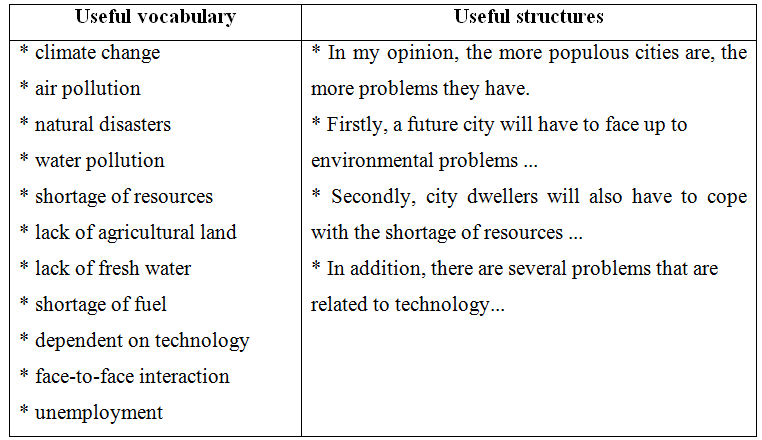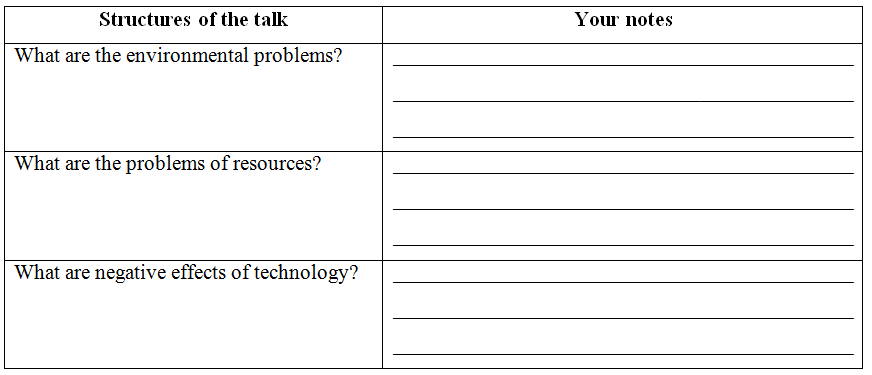Trắc nghiệm Chuyên đề 11 Unit 9. Cities of the future !!
Câu 1 :
Choose the best option to complete each of the following sentences.
1. Many types of__________energy such as wind and solar energy will never run out
1. Many types of__________energy such as wind and solar energy will never run out
Câu 2 :
2. Advances in technology are believed to improve the__________of life.
2. Advances in technology are believed to improve the__________of life.
Câu 3 :
3. This apartment is far from perfect, but it’s__________.
3. This apartment is far from perfect, but it’s__________.
Câu 4 :
4. In the future, cars equipped with on-board computers will be able to__________and avoid traffic jams automatically.
4. In the future, cars equipped with on-board computers will be able to__________and avoid traffic jams automatically.
Câu 5 :
5. Despite all the difficulties, Luke remains__________.
Câu 6 :
6. Environmentalists would like to see fossil fuels replaced by__________energy sources.
Câu 7 :
7. If you want to raise rents, you have to__________the housing first.
7. If you want to raise rents, you have to__________the housing first.
Câu 8 :
8. The hospital is so__________that some patients are being treated on trolleys in the corridors.
8. The hospital is so__________that some patients are being treated on trolleys in the corridors.
Câu 9 :
9. __________dwellers often accept noise as part of urban life.
9. __________dwellers often accept noise as part of urban life.
Câu 10 :
10. Michael remained strongly__________that his life could be much better if he moved to the city.
10. Michael remained strongly__________that his life could be much better if he moved to the city.
Câu 11 :
11. Osaka is considered one of the most__________cities thanks to its comprehensive infrastructure, low crime rates and stable public transport.
11. Osaka is considered one of the most__________cities thanks to its comprehensive infrastructure, low crime rates and stable public transport.
Câu 12 :
12. The alarm will go off automatically as soon as smoke is__________.
12. The alarm will go off automatically as soon as smoke is__________.
Câu 13 :
13. A large international meeting was held with the aim of promoting__________development in all countries.
13. A large international meeting was held with the aim of promoting__________development in all countries.
Câu 14 :
14. It’s important to__________the infrastructure of the city to make it more liveable.
14. It’s important to__________the infrastructure of the city to make it more liveable.
Câu 15 :
15. Many Americans were leaving their farm for the promise of
Câu 23 :
3. A: This movie is so interesting.
B: You like the film we are watching, don’t you? ________
3. A: This movie is so interesting.
B: You like the film we are watching, don’t you? ________
Câu 33 :
13. A: I can’t stand this cold weather.
B: Yes, the weather today is terrible, isn’t it? ________
13. A: I can’t stand this cold weather.
B: Yes, the weather today is terrible, isn’t it? ________
Câu 41 :
Choose the best option to complete each of the following sentences.
1. There are some Japanese in your class, ___________?
1. There are some Japanese in your class, ___________?
Câu 42 :
2. Let’s go out for a walk in the late afternoon, ___________?
2. Let’s go out for a walk in the late afternoon, ___________?
Câu 43 :
3. Everyone has been told about the news, ___________?
3. Everyone has been told about the news, ___________?
Câu 44 :
4. Don’t let anyone know our secret, ___________?
Câu 45 :
5. You couldn’t understand the directions on the packet, ___________?
5. You couldn’t understand the directions on the packet, ___________?
Câu 46 :
6. You haven’t seen Rosie since you graduated from university, ___________?
6. You haven’t seen Rosie since you graduated from university, ___________?
D. have you
Câu 47 :
7. Don’t talk during the lesson, ___________?
7. Don’t talk during the lesson, ___________?
Câu 48 :
8. They did little to improve their situation, ___________?
8. They did little to improve their situation, ___________?
Câu 66 :
6. If my brother forgets to take a packed lunch, he usually___________a sandwich from the canteen.
6. If my brother forgets to take a packed lunch, he usually___________a sandwich from the canteen.
Câu 88 :
10. You press this button. The doorbell rings
→ ____________________________________________________
10. You press this button. The doorbell rings
→ ____________________________________________________
Câu 91 :
3. What can streetlights with sensors do?
→ ____________________________________________________
3. What can streetlights with sensors do?
→ ____________________________________________________
Câu 101 :
3. The world will have to provide sufficient food, sanitation and___________for all people.
3. The world will have to provide sufficient food, sanitation and___________for all people.
Lời giải có ở chi tiết câu hỏi nhé! (click chuột vào câu hỏi).
Copyright © 2021 HOCTAP247







